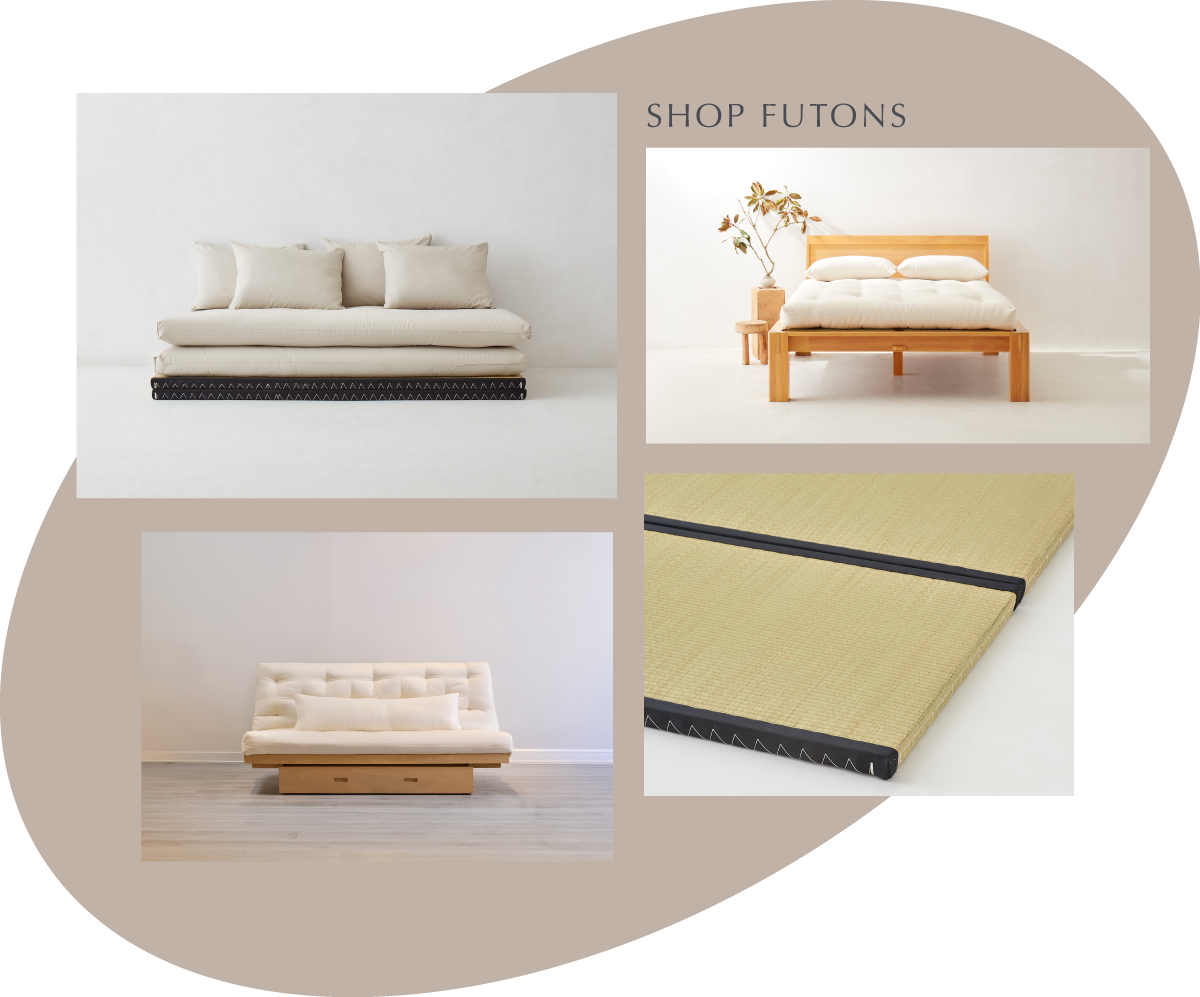
Where Did Futons Come From
Futon Frames were never designed specifically for the college dorm room.The first futon mattresses in Japan were nothing like the ones you buy online or in furniture stores today. The original futon was a thin mattress – only about two to three inches thick – filled with long-staple cotton, which made the futon sturdier and more durable. It was easy to roll up and store during the day, until needed again at night. Their portability and easy storage made futons popular in Japan, and it wasn’t long before other cultures started to catch on and adopt their own versions of this furniture piece. The word “Futon” originally described a bedding system, rather than the bed itself, consisting of a base, (shikibuton), the futon mattress itself usually filled with cotton batting, a comforter (kakebuton) or blanket (moku), and a pillow (makura).
The Western Style Futon
More recently in the United States, futons and modern futon frames started to make an appearance in the early 70s, but instead of just being used to sleep, the American versions were also used for sitting and were raised up off of the floor. When first introduced in the U.S., the futon wasn’t too spectacular. It was, however, more affordable and convenient, which is why the furniture piece became popular among students and apartment renters. Improvements have been made over the years and futons have come a long way. Although cheaper, less comfortable options are still available, futons can now also be beautiful, comfortable and sturdy. Additionally, to this day they are often more affordable than an actual sofa or bed.

Modern Futons
Today's futon frames are amazingly beautiful, functional and can be completely natural and chemical-free. Solid walnut wood, cherry, oak, and maple woods are just a few of the modern American hardwoods used today in quality futon frame manufacturing. Hard pine can be reclaimed to make lodge futon frames, and latex rubber trees when they stop producing milk for latex production the trees are cut down and made into futon frames.
Why Buy A Futon
In both bedrooms and living rooms, a futon is an excellent alternative to a traditional bed or couch as they provide more space, are often less expensive, can be just as comfortable or even more comfortable, and are typically more versatile as it is multi functional. In spite of their benefits, some still decide against futons, believing they are only used by college students and people just starting out. This could not be farther from the truth. Futon Frames are not just for college dorm rooms anymore. Futon frames are the base or foundation to any sofa or traditional couch is the frame as well.














